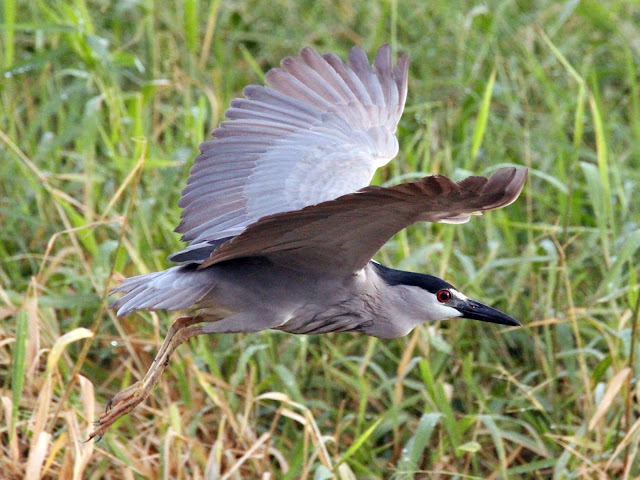As August ushered in peak migration season, we observed an unusually high number of banded shorebirds passing through—three of which were equipped with GPS trackers. These tracking efforts, led by ornithologist, help monitor bird movements, reveal migration routes, uncover behavioral patterns, and support global conservation initiatives. Platforms like bandedbirds.org allow us to follow the journeys of these carefree world travelers in real time.
 |
| Whimbrel FF6 photograph by Michael St. John |
Our first tagged bird was a Whimbrel (Numenius phaeopus), with the tag FF6, recovered on August 7th by Mike St. John at Long Pond, St. Andrew. .jpg) |
| Whimbrel FK7 photograph by Michael St. John |
At the same location on 30th, Eagle eyed Mike saw another Whimbrel (FK7) with a GPS tracker. While we don't have information on this specific bird's banding location or journey, its presence here is a wonderful start to our sightings for the month.
 |
| Willet HO4 with GPS tracker photograph by Michael St. John |
The next exciting sighting also occurred at Long Pond, this time a Willet with a GPS tracker, HO4, seen by Mike St. John on August 22nd.
 |
| Willet HO5 photographed by Qunicy Clarke |
A few days later, Quncy Clarke spotted a second Willet, HO5, at Inch Marlow in Christ Church. Thanks to Nathan Senner, we learned that both birds were tagged in Massachusetts, USA, in June as part of a Massachusetts Audubon project.
We also had a repeat visitor! A Ruddy Turnstone (Arenaria interpres), tagged 2=T, was seen for the second consecutive year at Inch Marlow, Christ Church. This bird has made quite a journey.
 |
| Ruddy Turnstone (Arenaria interpres), tagged 2=T |
- Captured and tagged: May 27th, 2018, at Mispillion Harbor, Back Beach, Delaware, USA.
- First Resighting: August 19th, 2023, at Long Beach, Christ Church, Barbados.
- Latest Resighting: August 14th, 2025, at Inch Marlow, Christ Church, Barbados.
Our final observation was of a Semipalmated Sandpiper (Calidris pusilla), tagged N20, which was spotted at River Bay, St. Lucy.
 |
| Semipalmated Sandpiper tagged N20 |
- Captured and tagged: May 13th, 2024, at Fortescue, Raybins Beach, New Jersey, USA.
- First and only resighting to date: July River Bay, August 26, 2025
Each of these sightings offers a vital clue in understanding the migratory journeys of these vulnerable species. By tracking their movements, we aim to identify and address the challenges they face along their flight paths—and ultimately help reverse their population decline.
You can play a part in this important work. If you spot a banded bird, please report it to bandedbirds.org or share the sighting with us at Birds of Barbados.
Thank you and continue to enjoy your birding!




.jpg)












.jpg)













